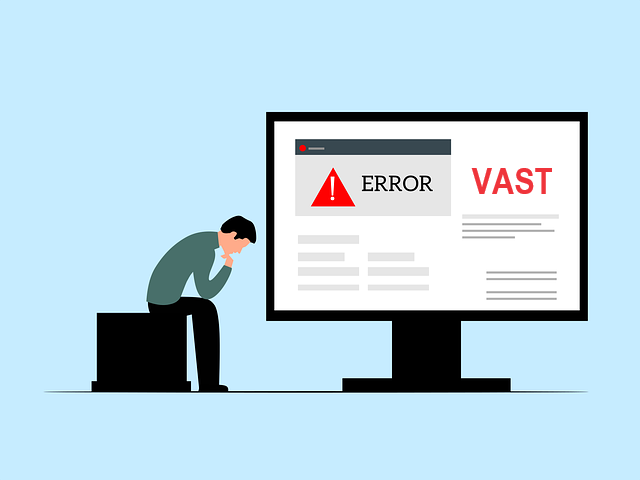
Educating Advertisers: Understanding and Preventing VAST Errors
According to statistics, 55% of the advertising pie now sits in the digital realm, offering a tantalizing mix of opportunity and headache for brands. Video ads, a cornerstone of this sector, have been revolutionized by VAST, the video ad serving template.
VAST streamlines video ad delivery and tracking, injecting certainty and reliability into both sides of the game: advertisers and publishers. However, mastering VAST requires navigating potential errors that can hinder campaign performance.
This post delves into the complexities of VAST, emphasizing prevalent errors, their consequences, and strategies for mitigation. Acquiring this knowledge equips individuals to enhance their engagement in digital video advertising and maximize its effectiveness.
Table of Content
What Is VAST?
The Interactive Advertising Bureau’s (IAB) video ad serving template, known as VAST, forms a critical backbone for video advertising. By establishing a standardized language between video players and ad servers, it streamlines the delivery, tracking, and playback of video ads. This efficiency not only optimizes ad performance but also fosters a smoother user experience.
VAST has experienced continual development, with each iteration enhancing its functionality to meet the dynamic requirements of online advertising. This flexibility ensures that VAST remains an indispensable instrument for navigating the fluid landscape of digital media.
Common VAST Errors
Advertisers frequently encounter a range of VAST errors, which can be perplexing. These errors not only affect ad delivery but can also significantly impact the analytics and reporting of ad performance.
From ‘Video player timeout’ to ‘Media file not found,’ these errors can stall campaigns, leading to lost opportunities and revenue. Such disruptions can adversely affect the brand’s reputation and viewer engagement.
Each technical error in VAST often arises from typical oversights or mis-configurations in the VAST tag setup. Recognizing and comprehending these errors is imperative for sustaining the efficacy of digital advertising campaigns.
Understanding VAST Errors
To effectively tackle these errors, understanding their roots is crucial. Knowing the specifics of each error can greatly help in a quick and effective resolution. VAST error codes are designed to pinpoint specific issues.
For instance, a ‘301’ error indicates a redirect problem, while a ‘303’ points to a media file issue. These numeric codes serve as essential diagnostic tools for advertisers. These errors typically arise from incorrect VAST tag configurations, incompatibilities between video players and ad formats, or network and server-side issues.
Understanding the technicalities behind these errors can empower advertisers to make informed decisions. The impact is immediate: disrupted ad delivery means a compromised viewer experience and potential revenue loss. Thus, a proactive approach to understanding VAST errors is indispensable.
Preventing VAST Errors
Prevention of VAST errors starts with the meticulous setup and testing of VAST tags. Proper configuration and thorough testing are vital to ensuring seamless ad experiences. Advertisers must ensure that their tags are correctly formatted and compatible with various video players. Compatibility is key to reaching a wider audience without technical hindrances.
Utilizing tools like VAST validators can help with identifying and fixing errors before going live. These tools are instrumental in maintaining the integrity of ad campaigns. Regular monitoring and maintenance are equally important. Continuous monitoring of ad performance is essential for the early identification and mitigation of potential issues.
By proactively addressing even minor anomalies, you can prevent them from developing into significant errors. Continuous vigilance is paramount to preserving the efficacy and long-term success of your digital advertising strategies.
Advanced Troubleshooting Techniques
When faced with complex VAST issues, a systematic troubleshooting approach is key. This approach should combine technical expertise with strategic thinking. Start by analyzing error reports to understand the underlying problem.
Detailed analysis is often the first step towards finding a solution. Cross-reference these with your VAST tag setups and video player specifications. Correlating error reports with setups can reveal unnoticed discrepancies. In instances where the issue is elusive, collaboration with ad servers and platforms can provide additional insights and solutions.
Pooling resources and expertise can often lead to more effective problem-solving. This collaborative approach often unveils solutions that are not immediately apparent. Such collaboration underscores the importance of partnerships in the digital advertising ecosystem.
The Future of VAST
VAST continues to evolve, with newer versions promising enhanced capabilities and more robust error handling. Advertisers should stay informed about these updates, understanding how they can leverage new features for more efficient and error-free ad delivery. Preparing for these advancements involves not only keeping abreast of the latest VAST specifications but also ensuring that your ad delivery systems are adaptable to these changes.
Final Thoughts
VAST errors, while challenging, are not insurmountable. With a deep understanding of VAST mechanics, diligent setup and testing, and proactive monitoring, advertisers can significantly reduce the occurrence of these errors. Embracing the evolving landscape of VAST will further equip advertisers to handle future challenges, ensuring seamless ad delivery and maximized campaign effectiveness.


